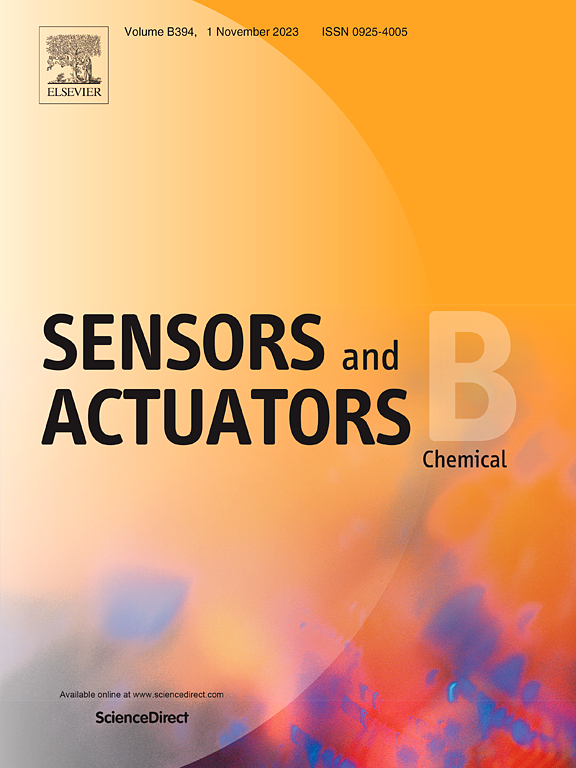用于高灵敏度喷墨打印可穿戴式气体传感器的通用策略,以尽量减少纺织品中的毛细效应
IF 8
1区 化学
Q1 CHEMISTRY, ANALYTICAL
引用次数: 0
摘要
基于纺织品的可穿戴气体传感器技术由于其大表面积、内部气体吸附能力和可集成性而引起了人们的极大关注。然而,纺织品的粗糙和多孔性往往导致材料沉积不均匀,限制了传感器的性能。在此,我们提出了一种通用的改性方法,使用疏水性SiO2纳米颗粒来减少纺织品中的毛细效应,从而实现电极和传感材料的精确喷墨打印。通过减小毛细效应,制备了一种具有高度均匀CuO纳米片传感层和精确银交叉电极的可穿戴CO传感器。在室温下,该传感器对10 ppm CO的响应为76.2%,检测限低至200 ppb(响应为14.42%)。在高湿度(98% RH)和显著弯曲(120°5000次循环)的条件下,该传感器对10ppm CO仍然具有高灵敏度。这项工作提出了一种通用方法,可以最大限度地减少纺织品中的毛细效应,为开发柔性电子产品和可穿戴气体传感器提供了新的可能性。本文章由计算机程序翻译,如有差异,请以英文原文为准。
Universal strategy to minimize capillary effect in textiles for high-sensitivity inkjet-printed wearable gas sensor
Textile-based wearable gas sensor technologies have attracted significant attention due to their large surface area, internal gas adsorption capability, and integrability. However, the rough and porous nature of textiles often leads to non-uniform material deposition, limiting sensor performance. Here, we propose a universal modification method using hydrophobic SiO2 nanoparticles to reduce the capillary effect in textiles, enabling precise inkjet printing of electrodes and sensing materials. By minimizing the capillary effect, a wearable CO sensor with a highly uniform CuO nanosheets sensing layer and precise Ag interdigitated electrodes is fabricated. At room temperature, the sensor exhibits a response of 76.2 % to 10 ppm CO, with a detection limit as low as 200 ppb (14.42 % response). In conditions of high humidity (98 % RH) and significant bending (120° for 5000 cycles), the sensor still exhibits high sensitivity to 10 ppm CO. This work presents a universal method for minimizing the capillary effect in textiles, offering new possibilities for developing flexible electronics and wearable gas sensors.
求助全文
通过发布文献求助,成功后即可免费获取论文全文。
去求助
来源期刊

Sensors and Actuators B: Chemical
工程技术-电化学
CiteScore
14.60
自引率
11.90%
发文量
1776
审稿时长
3.2 months
期刊介绍:
Sensors & Actuators, B: Chemical is an international journal focused on the research and development of chemical transducers. It covers chemical sensors and biosensors, chemical actuators, and analytical microsystems. The journal is interdisciplinary, aiming to publish original works showcasing substantial advancements beyond the current state of the art in these fields, with practical applicability to solving meaningful analytical problems. Review articles are accepted by invitation from an Editor of the journal.
 求助内容:
求助内容: 应助结果提醒方式:
应助结果提醒方式:


